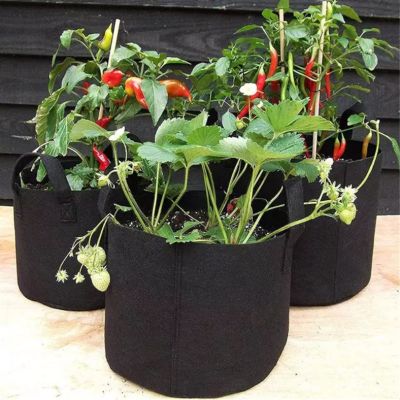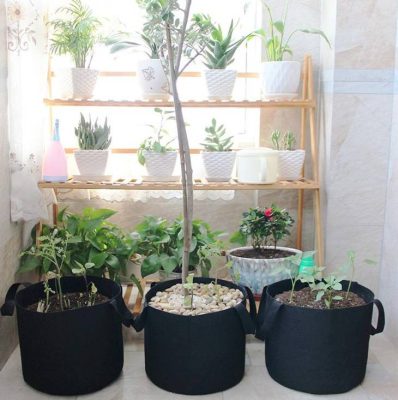To ensure maximum plant health and growth when using fabric grow bags, follow these guidelines:
- Choosing the Right Size: Select a fabric grow bag size that suits the specific plant’s root system. Avoid choosing grow bags that are too small, as they can restrict root growth. Opt for larger sizes for plants with expansive root systems or those that will grow larger over time.
- Proper Soil Mix: Use a well-draining and nutrient-rich soil mix suitable for your plants. A combination of potting soil, compost, and perlite or vermiculite works well. Avoid heavy or compacted soils, as they can hinder root development and drainage.
- Preparing the Grow Bag: Before planting, moisten the grow bag and fill it with the soil mix, leaving about an inch or two of space from the top. Gently pat down the soil to remove any air pockets and ensure it is evenly distributed.
- Planting and Transplanting: Place the plant in the grow bag, ensuring the root system is spread out. Add more soil around the plant, gently firming it to provide support. If transplanting, be careful not to disturb the roots excessively. Maintain the same planting depth as in the previous container.
- Watering: Fabric grow bags tend to dry out faster than traditional pots, so monitor the moisture levels regularly. Water thoroughly when the top inch of soil feels dry. Ensure proper drainage by allowing excess water to flow out of the grow bag’s sides. Avoid overwatering, as it can lead to waterlogging and root rot.
- Fertilization: Regularly feed your plants with a balanced organic or slow-release fertilizer according to their specific requirements. Follow the recommended dosage and frequency to provide essential nutrients for optimal growth.
- Sunlight Exposure: Place the fabric grow bags in an area that receives adequate sunlight based on your plants’ needs. Most plants require a minimum of 6-8 hours of direct sunlight per day. If growing indoors, ensure they receive sufficient light through windows or use supplemental grow lights.
- Pruning and Training: Some plants, such as tomatoes or vining vegetables, may require pruning and training to maintain their shape and encourage better fruit production. Regularly remove any dead or damaged foliage and provide appropriate support as needed.
- Pest and Disease Management: Monitor your plants for any signs of pests or diseases. Take proactive measures such as regular inspection, proper sanitation, and using organic pest control methods when necessary.
- Rotation and Reuse: To prevent soil depletion and disease buildup, consider rotating your plants in different fabric grow bags each growing season. After each season, empty the grow bags, clean them, and store them in a dry place for reuse.
Remember to regularly assess your plants’ needs, adjust watering and fertilization accordingly, and provide any additional care required based on their specific requirements. By following these guidelines, you can promote maximum plant health and growth in fabric grow bags.








